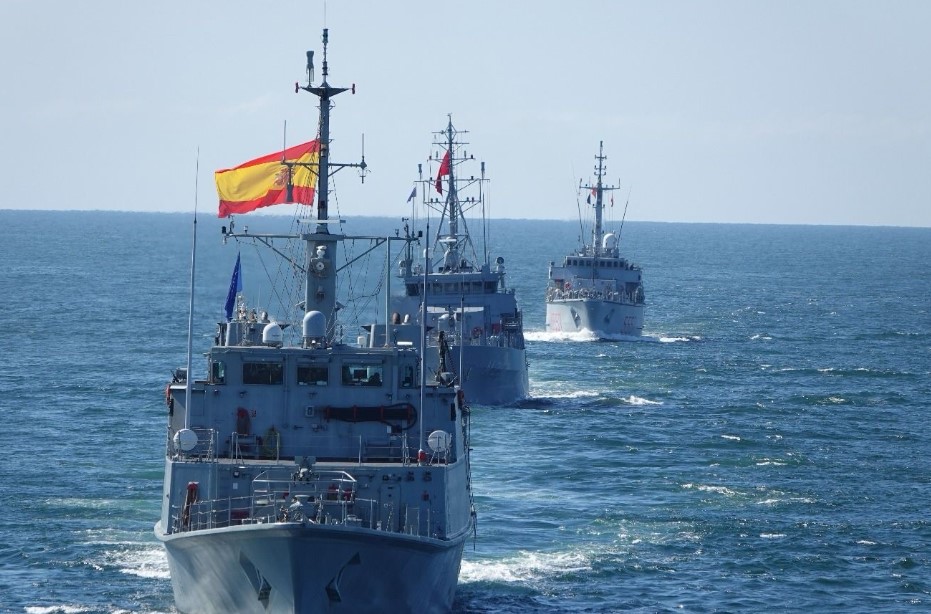The Canary Islands are at the heart of this year’s Armed Forces Day 2025 celebrations. With Santa Cruz de Tenerife and Las Palmas de Gran Canaria serving as host cities, a packed program culminates on Saturday, June 7th, with a central parade presided over by Their Majesties, the King and Queen of Spain. A particular highlight is the inaugural participation of the S-81 “Isaac Peral” submarine in Gran Canaria’s capital.
Traffic Changes and Safety Advisories in the Canary Islands
To accommodate the major events, an extensive traffic and security plan has been implemented, coordinated by the Cabildo de Gran Canaria, the Government Delegation in the Canary Islands, and the Capital’s Consistory. Visitors are strongly advised to use public transport as significant traffic disruptions are expected.
On Friday, June 6th, an aviation review begins at 3:00 PM in the city’s bay, between San Telmo and the Cathedral. At 4:00 PM, an impressive exhibition at Las Alcaravaneras beach will follow, featuring air, amphibious, and land demonstrations by the Army, Navy, Air and Space Force, and the Guardia Civil.
From 1:15 PM, traffic disruptions will occur at the Torre Las Palmas roundabout, affecting access to the Naval Base from and to Avenida Marítima northbound. Detours will impact the Julio Luengo Tunnel and Calle León y Castillo. Further information on specific detours can be found on the official city council channels. Access to Calle Néstor de la Torre and Avenida José Mesa y López remains unaffected.
Armed Forces Day: A Logistical Masterpiece and Political Challenges
Armed Forces Day (DIFAS) is traditionally a festive occasion that underscores the connection of the Spanish armed forces with society. Since 1987, the event has honored the commitment of the Army and Navy to public service. This year, for the first time in 39 years, the commemoration takes place outside the peninsula, with the Canary Islands hosting both main events.
Organizing this dual celebration was a logistical challenge: 3,266 military personnel (including 425 women), 67 vehicles, 33 motorcycles, 35 aircraft, 21 helicopters, and 13 boats were mobilized. Even the famous Legion goat, a one-and-a-half-year-old ram named “Camarón,” traveled to the islands.
A special feature of this year’s parade is the participation of the Eurocorps flag, carried by a Spanish officer and escorted by non-commissioned officers from Germany, Belgium, Spain, France, Luxembourg, and Poland. The PAPEA acrobatic patrol of the Air and Space Force will also fly with the flag commemorating the 10th anniversary of the proclamation of King Felipe VI.
Despite the festive nature, political discussions and budgetary issues will subtly resonate. Defense Minister Margarita Robles is arriving directly from the NATO meeting in Brussels, where a new increase in defense spending was debated. The United States is pushing for 5%, while Alliance President Mark Rutte proposes a formula of 3.5% plus 1.5% for hybrid and cybersecurity technologies.
Spain currently ranks among the NATO countries with the lowest defense spending, reaching only 1.28% in 2024. Despite the original goal of reaching 2% by 2029, the government announced an armament plan of 10.471 million euros in April. The exact implementation of this plan remains unclear, especially for projects like the Joint Radio Tactical System (SCRT) worth 350 million euros, which involves a transfer of Israeli technology to Spanish companies.
Spain’s Strategic Location and Southern Challenges
Spain consistently emphasizes its strategic position within NATO as the “last southern border,” sharing territory with Morocco and possessing a strategic archipelago: the Canary Islands. While NATO has shifted its focus to the Eastern Front since 2022 due to Russian aggression against Ukraine, the Spanish government demands more attention for the southern neighborhood, characterized by conflict, insecurity, and illegal migration. Despite the appointment of Spanish diplomat Javier Colomina as special envoy for the region, China and Russia are increasing their influence in the Sahel.
The armed forces also face internal challenges: the urgent need for at least 20,000 new positions is acute, as thousands of soldiers who joined at the beginning of the century are gradually transitioning to the reserve. The Defense Minister has ruled out reinstating compulsory military service, and there is also a shortage of reservists. Another demand from military personnel is the recognition of their profession in the risk category, which would mean salary increases and better rights in case of accidents or service-related illnesses.
Another pressing issue is the need to replenish ammunition stockpiles.
Migration and Political Controversies
The Canary Islands are a focal point for DIFAS, also in light of the consistently high arrival numbers of migrants. As of May 31st this year, 10,986 people have arrived by sea in the Canary Islands. Interior Minister Fernando Grande-Marlaska will participate in the parade alongside Defense Minister Margarita Robles. Their presence last year was met with boos. This year, the head of the Guardia Civil will participate amidst the PSOE plumbers’ scandal, which questions the independence of the Central Operational Unit (UCO) investigating cases like Koldo or the president’s wife, Begoña Gómez. Despite the attacks, Interior Minister Marlaska has not publicly defended the Guardia Civil thus far, which he is expected to do at the DIFAS event.




